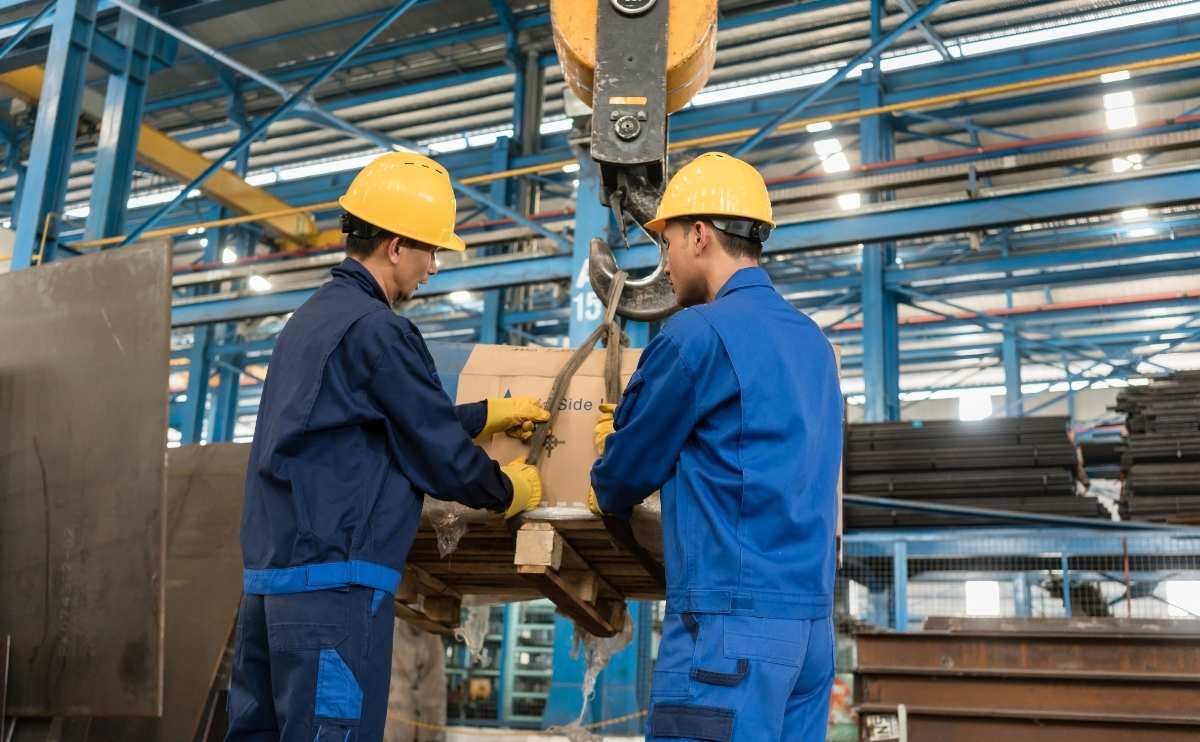Introduction
Maximize efficiency in material handling to enhance productivity across industries like construction, automotive, manufacturing, and pharmaceuticals. In warehouses, factories, and industrial plants, optimizing material handling operations reduces costs, improves safety, and streamlines workflows. Investing in the right equipment is key to achieving these benefits. This blog explores how proper material handling tools can transform operations and drive industrial efficiency.
Essential Equipment for Material Handling
To enhance productivity and reduce manual labor, it’s crucial to invest in equipment specifically designed to address the unique needs of your facility. Below are some of the most common and efficient equipment used in material handling:
Conveyors
Conveyors are an integral part of maximizing efficiency in material handling systems, especially in large-scale warehouses and production facilities. They are used to move materials, components, or products from one point to another quickly and with minimal effort. This reduces the time spent manually moving items, allowing staff to focus on other critical tasks. By choosing conveyors designed to maximize efficiency in material handling, businesses can improve operational workflows. Conveyors are available in various forms, including belt conveyors, roller conveyors, and overhead conveyors, making them versatile for many industries.
Benefits: Increases throughput, reduces manual handling, enhances safety, and minimizes human error.
Forklifts
Forklifts are perhaps the most recognized equipment for maximizing efficiency in material handling. These versatile machines are designed to lift, carry, and transport heavy goods across short distances within a warehouse or factory. They are essential for moving large pallets or bulky items that would otherwise require significant manual labor. By using forklifts to maximize efficiency in material handling, businesses can reduce the physical strain on workers and increase operational speed. With attachments like extendable forks, clamps, or rotators, forklifts can handle a wide variety of materials efficiently.
Benefits: Maximizes lifting capacity, enhances maneuverability in tight spaces, improves productivity, and reduces the risk of injuries related to manual lifting.
Cranes
Cranes are vital for maximizing efficiency in material handling by lifting and placing heavy materials with precision, especially in industries such as construction, manufacturing, and steel production. They are designed to move large and heavy objects that forklifts or conveyors might not be able to handle. By utilizing cranes to maximize efficiency in material handling, operations can achieve greater control over heavy lifting tasks. Cranes come in various types, including overhead cranes, gantry cranes, and jib cranes, each offering different functionalities depending on the needs of the operation.
Benefits: Provides precise control for heavy lifting, minimizes labor-intensive tasks, reduces downtime, and can handle a wide range of materials, from raw materials to finished products.
Additional Tips for Optimizing Material Handling
While selecting the right equipment is crucial, there are additional strategies you can adopt to further maximize efficiency in material handling:
- Training Staff: Ensure that your team is well-trained to operate material handling equipment safely and effectively. Proper training minimizes errors and accidents, improving overall efficiency.
- Regular Maintenance: Schedule regular maintenance for all material handling equipment to prevent downtime and ensure peak performance. Well-maintained tools that maximize efficiency in material handling are more reliable and cost-effective in the long run. For example, if your operations use industrial pumps, refer to The Essential Guide to Maintaining Industrial Pumps to ensure those critical components are running optimally.
- Ergonomic Design: Choose equipment with ergonomic features that reduce strain on operators, improving safety and productivity. For example, ergonomic forklifts and conveyors that maximize efficiency in material handling can make tasks less physically demanding.
- Technology Integration: Invest in smart systems such as automated conveyors or AI-driven inventory management solutions to further streamline workflows and reduce manual intervention, all contributing to maximizing efficiency in material handling.
Conclusion
Choosing the right equipment for material handling can significantly improve operational efficiency by reducing the time and labor required to manage materials. Whether it’s conveyors for seamless movement, forklifts for lifting heavy items, or cranes for precision handling, investing in the right tools for the job is essential to maintain smooth and productive operations. By upgrading your material handling processes and implementing best practices, you can enhance workflow, reduce manual labor, and ultimately boost your bottom line.
Additionally, evaluating your facility’s specific requirements and consulting with experts can help you identify the most suitable equipment for your operations. Don’t overlook the importance of scalability—choosing equipment that can adapt to your growing business needs will ensure long-term success. For more insights on equipment optimization, visit Material Handling Industry (MHI), a leading source for material handling and logistics solutions.



